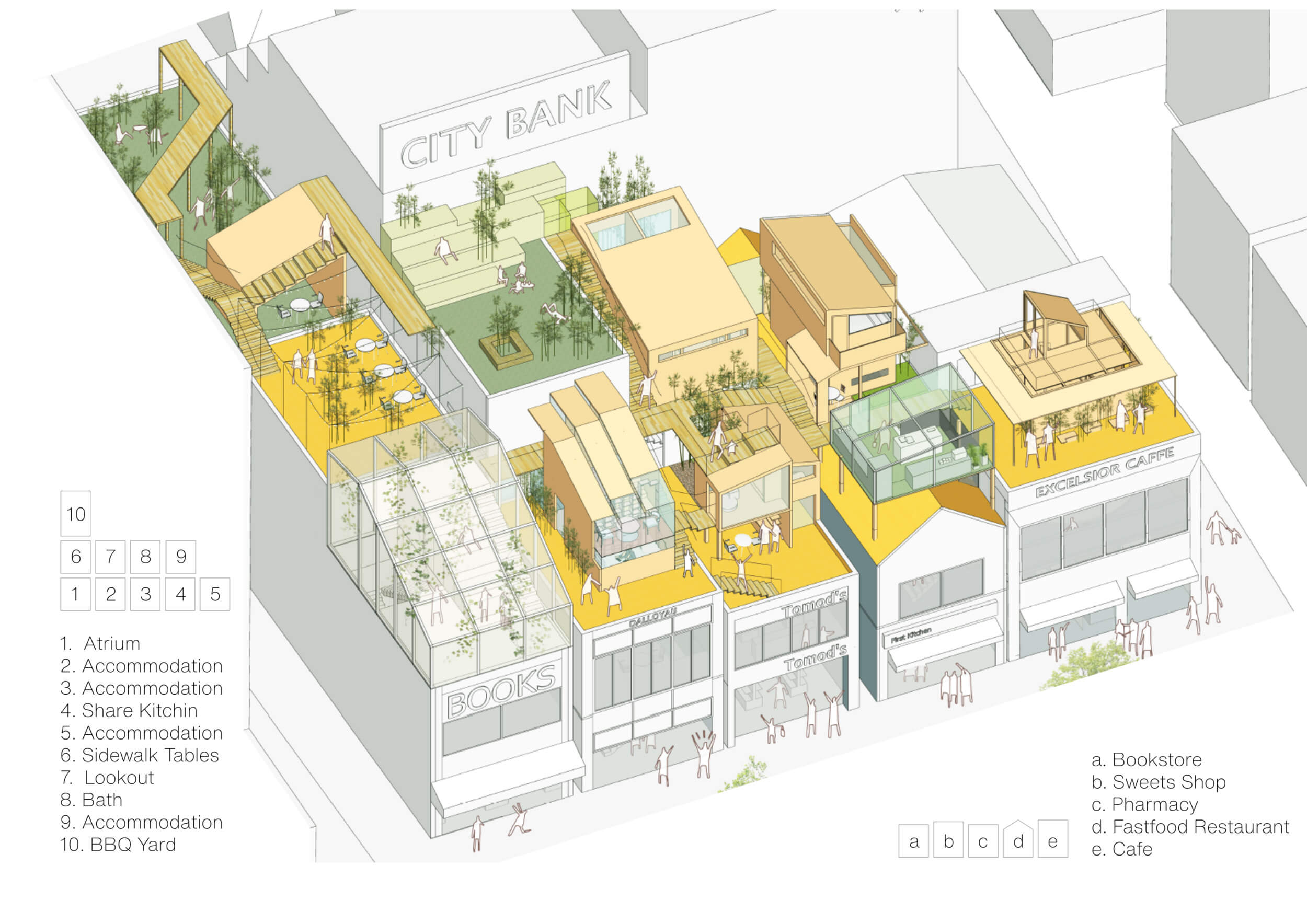The area in front of Jiyugaoka station North exit is exposed to intensive flows of people as well as various things and events in the town. From early morning to midnight, scenes change constantly through local people’s ac- tivities, the tides of 160,000 commuters and visitors a day, car and train fluxes, and the operations of shops and offices, all of which punctuate the apparently chaotic scenes into unique rhythms of the town like slow breath- ing.
Now almost buried among recent high-rise buildings, five two-storey shops facing the sta- tion square still remain as the face of the town, and one would notice the shops share an un- even yet similar-height roofline. Once noticed, the contrast between new high-rises and the surviving low-rises looks like a reminder of old Jiyugaoka back in the rapidly fading past.
Our accommodation project “YOUR PRIVATE SKY” redefines the now-hidden roofline into an open space for the shop customers and lo- cal and visiting rooftop lovers, while providing special access to sky and townscape only with the guests.
Student: Xiangjun Liu
Laundry
The importance of laundry as a part of Japanese everyday life has steadily declined, mainly due to the reduction of the time, space, and tools required to perform this household task. This development has not only been caused by technical progress, such as the introduction of electrical washing machines and dryers, but also by demographic and societal developments, in particular the changing role of women in Japanese society. Even though the appearance of coin-operated launderettes in the post-war years, combined sometimes with public baths, introduced a new form of communality, overall the collective aspect of doing laundry chores has decreased drastically from the pre-modern period to the present. Today washing activity is split between a variety of laundry settings and forms, ranging—dependent on the residential environments that coexist in contemporary Japanese society—from minimal washing units, to the use of balconies or bathroom dehumidifiers for drying, to communal spaces.
Microwave
The microwave reduces the dozens of different steps usually necessary for the preparation of a respectable dinner to three distinct actions, accompanied by the characteristic sound of the microwave clock and its final ping. For a short two minutes the microwave interrupts the normal flow of life, framing a gap to be filled by other, unpredictable, activities. Yet beyond its immediate impact, on the one hand the microwave reflects far larger changes in the modern food-industry chain, of which it is a final yet crucial link, and on the other it profoundly impacts on daily behavior: from the specific term for heating food in Japanese—chinn-suru—to the various spaces used today to prepare and eat a meal, such as a corner in a convenience store or a bench under an office building. A microwave is not only a heater, steamer, baker, defreezer, but also a symbol of modern efficiency. As such, the microwave is always more than just a microwave.

